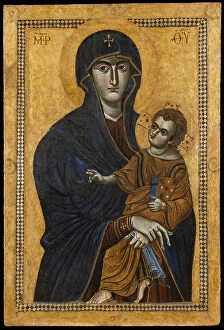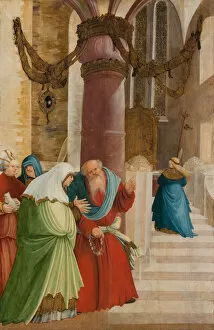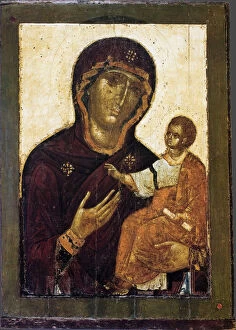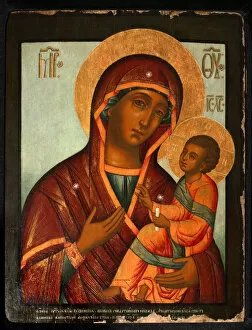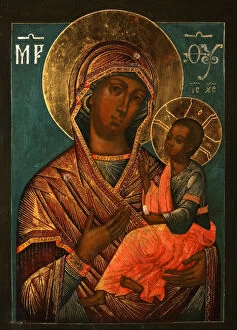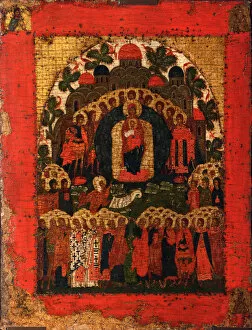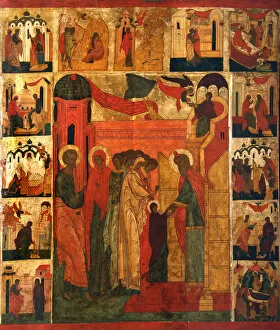Virgin Hodegetria Collection
"The Virgin Hodegetria: A Timeless Devotion in Iconography" The Virgin Hodegetria, also known as Our Lady of the Sign, holds a significant place in religious art
For sale as Licensed Images
Choose your image, Select your licence and Download the media
"The Virgin Hodegetria: A Timeless Devotion in Iconography" The Virgin Hodegetria, also known as Our Lady of the Sign, holds a significant place in religious art. This 16th-century Russian icon beautifully portrays the divine presence and maternal love of Mary. Created by a Byzantine artist during the same era, another rendition of The Virgin Hodegetria showcases its enduring popularity. In the 1520s, an exquisite icon of The Virgin Hodegetria emerged, capturing the hearts of believers with its intricate details and profound spirituality. Similarly, Master of Pulkau's masterpiece from around 1509-1510 depicts The Entry of the Most Holy Theotokos into the Temple—a pivotal moment in Christian history. The devotion to this sacred image continued through centuries and across regions. A remarkable 12th-century Russian icon exemplifies how artists sought to convey Mary's role as a guide for humanity on their spiritual journey. Ulanov's work from the late 1690s further emphasizes her significance in religious life. As time progressed into the early 18th century, Yegor Ivanovich Grek crafted his own interpretation of The Virgin Hodegetria—showcasing both artistic evolution and unwavering faith. Meanwhile, Dionysius' iconic piece from around 1502-1503 captivates viewers with its timeless beauty. Russian icons remained faithful to this theme throughout different periods; a stunning depiction from the sixteenth century illustrates Mary's importance within Russian Orthodox traditions. Lastly, a treasured Byzantine Icon dating back to Yugoslavia in the thirteenth century reminds us that devotion to The Virgin Hodegetria transcends borders. These diverse representations highlight not only artistic skill but also deep reverence for Mary as she leads believers towards salvation. Through these images spanning centuries and cultures, we witness how faith intertwines with creativity—an eternal testament to human spirituality.

